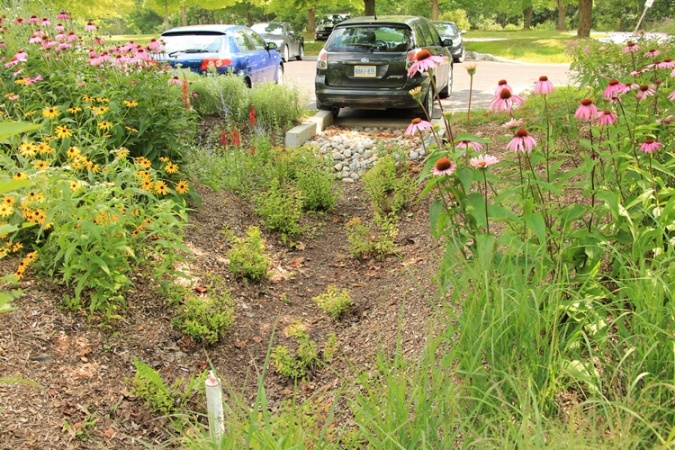Difference between revisions of "Bioretention"
Jump to navigation
Jump to search
Jenny Hill (talk | contribs) |
Jenny Hill (talk | contribs) |
||
| Line 66: | Line 66: | ||
<div class="col-md-12"> | <div class="col-md-12"> | ||
---- | ---- | ||
| − | === | + | ===Performance=== |
| + | </div> | ||
| + | <div class="col-md-8"> | ||
| + | Performance Content | ||
| + | |||
| + | </div> | ||
| + | <div class="col-md-4"> | ||
| + | |||
| + | <panelSuccess> | ||
| + | <gallery mode="packed" widths=300px heights=300px> | ||
| + | IMG 2457 750X500.jpg| Bioretention cell capturing and treating runoff from adjacent parking lot at the Kortright Centre, Vaughan. | ||
| + | </gallery> | ||
| + | </panelSuccess> | ||
| + | |||
| + | </div> | ||
| + | <div class="col-md-12"> | ||
| + | ---- | ||
| + | ===Incentives and Credits=== | ||
</div> | </div> | ||
<div class="col-md-8"> | <div class="col-md-8"> | ||
Revision as of 19:27, 21 June 2017
This article is about planted installations designed to capture surface runoff through an engineered soil with subterranean infrastructure.
For simpler, residential systems, see Rain Gardens.
For linear systems, which convey flow, but are otherwise similar see Bioswales.
Overview[edit]
Bioretention cells are the
Bioretention cells are an ideal technology for:
- People who want bioretention
The fundamental components of a bioretention cell are:
- Biomedia - an engineered soil mix
- Planting -
Additional components may include:
- Impermeable membrane to prevent infiltration to soils below
<panelSuccess>
</panelSuccess>
Planning Considerations[edit]
Planning Content
<panelSuccess>
</panelSuccess>
Design[edit]
Design Content
<panelSuccess>
</panelSuccess>
Performance[edit]
Performance Content
<panelSuccess>
</panelSuccess>
